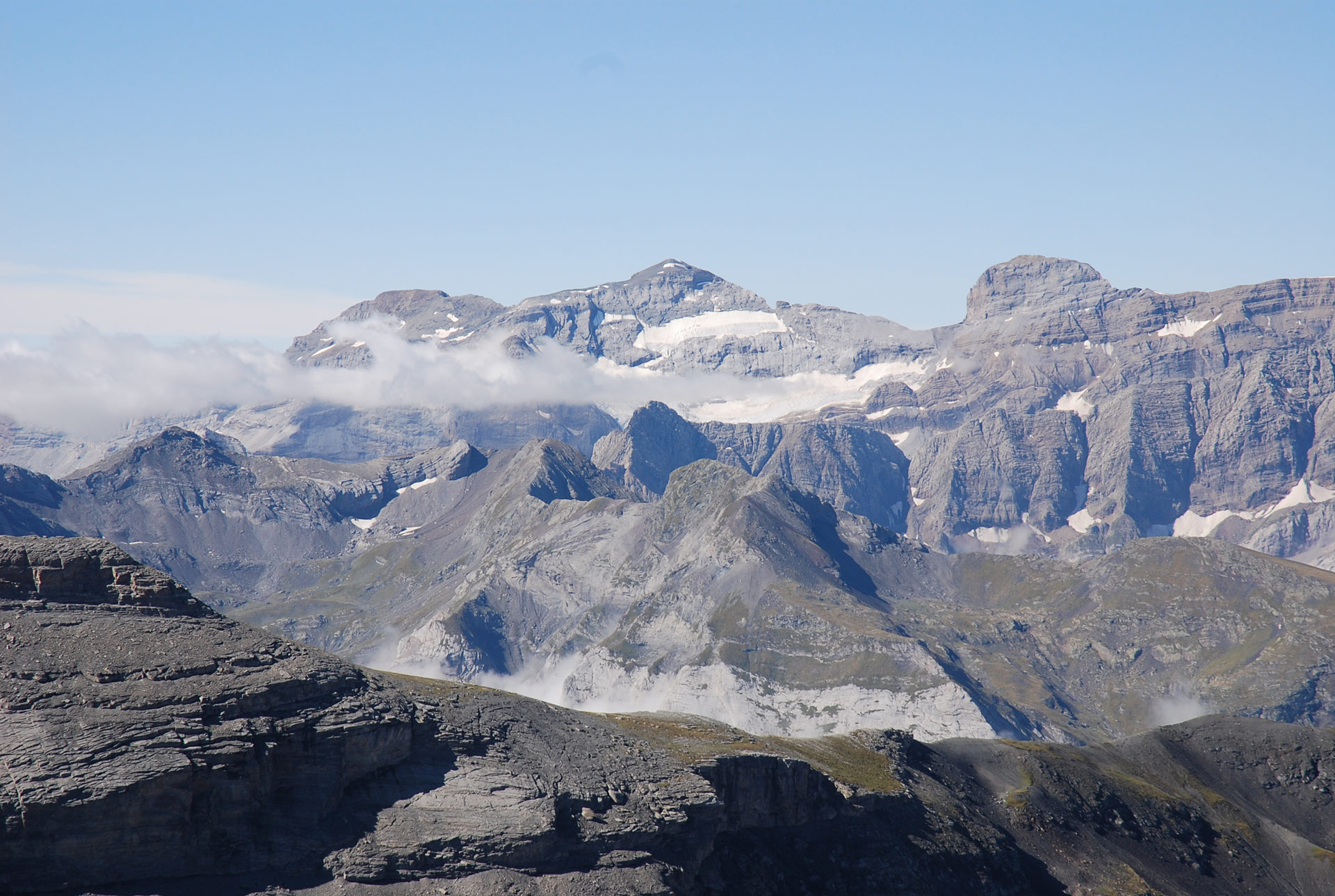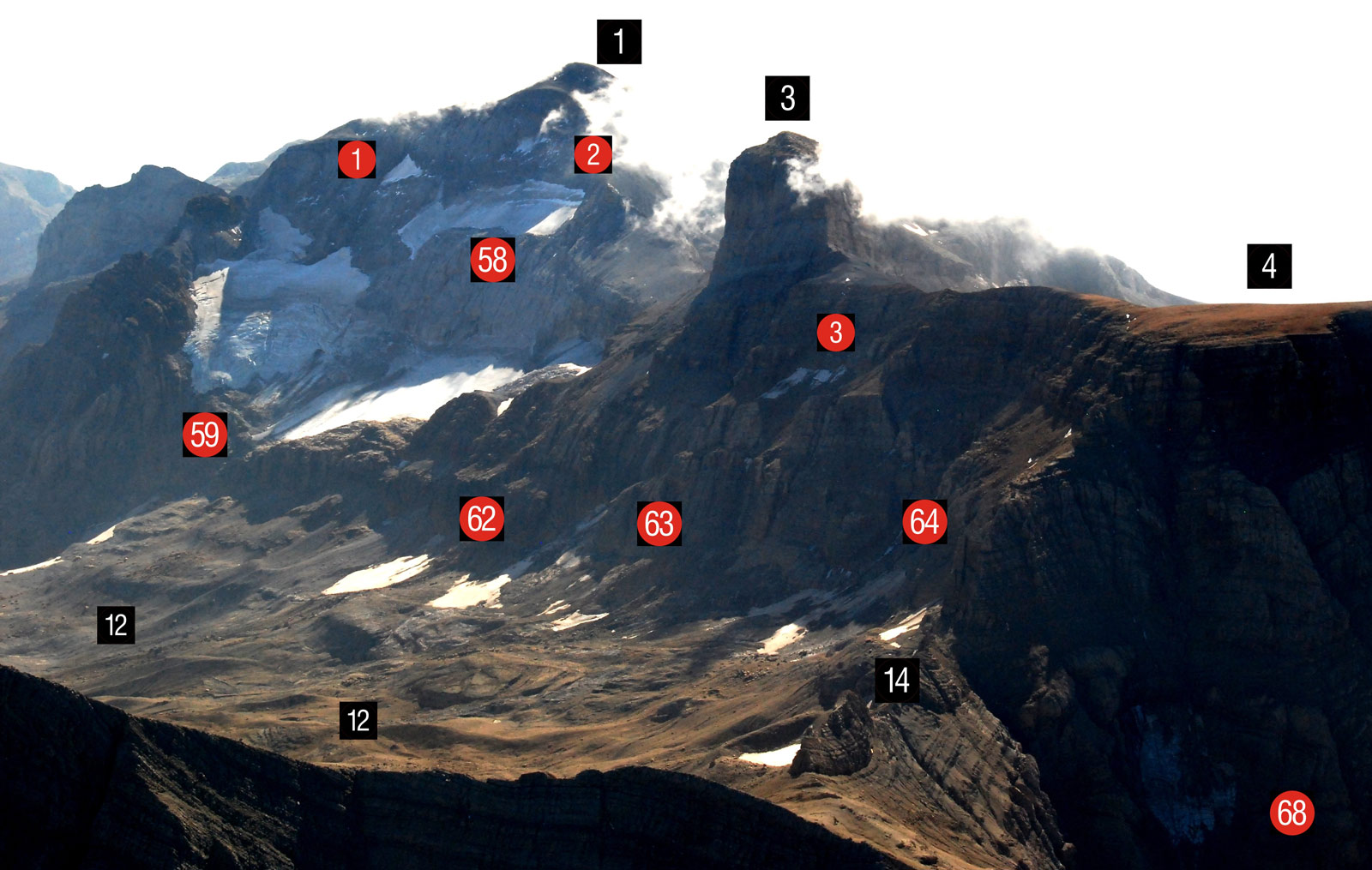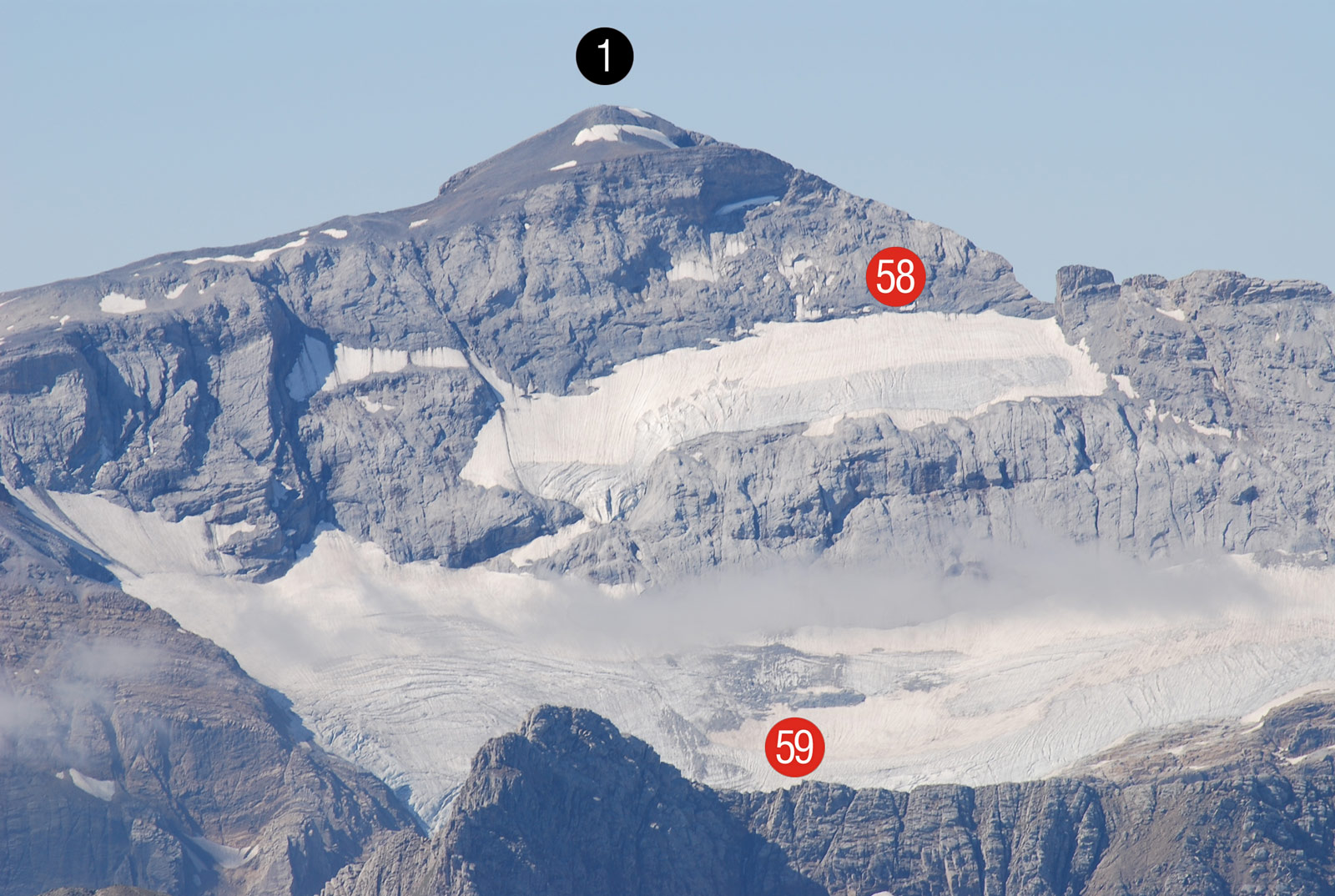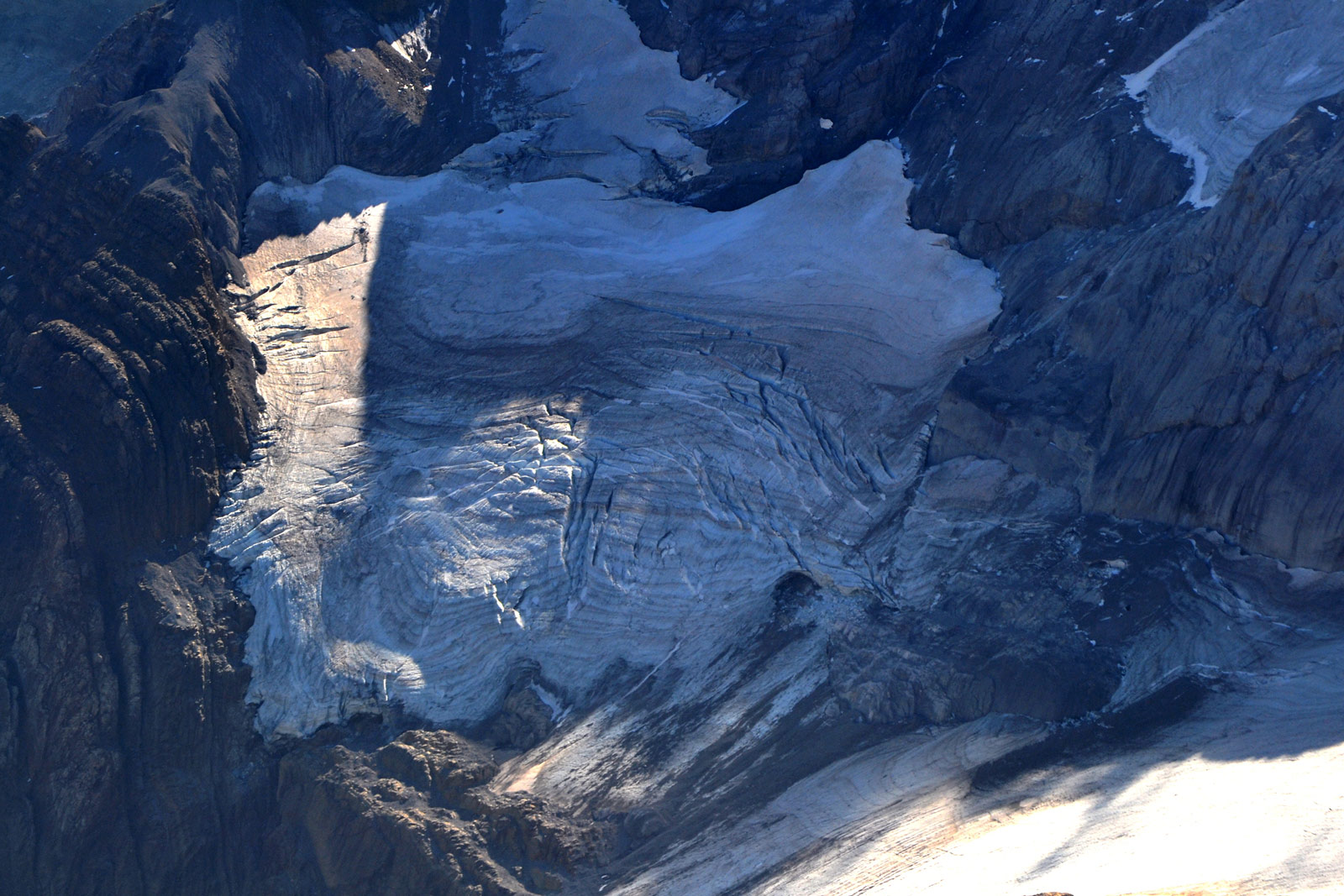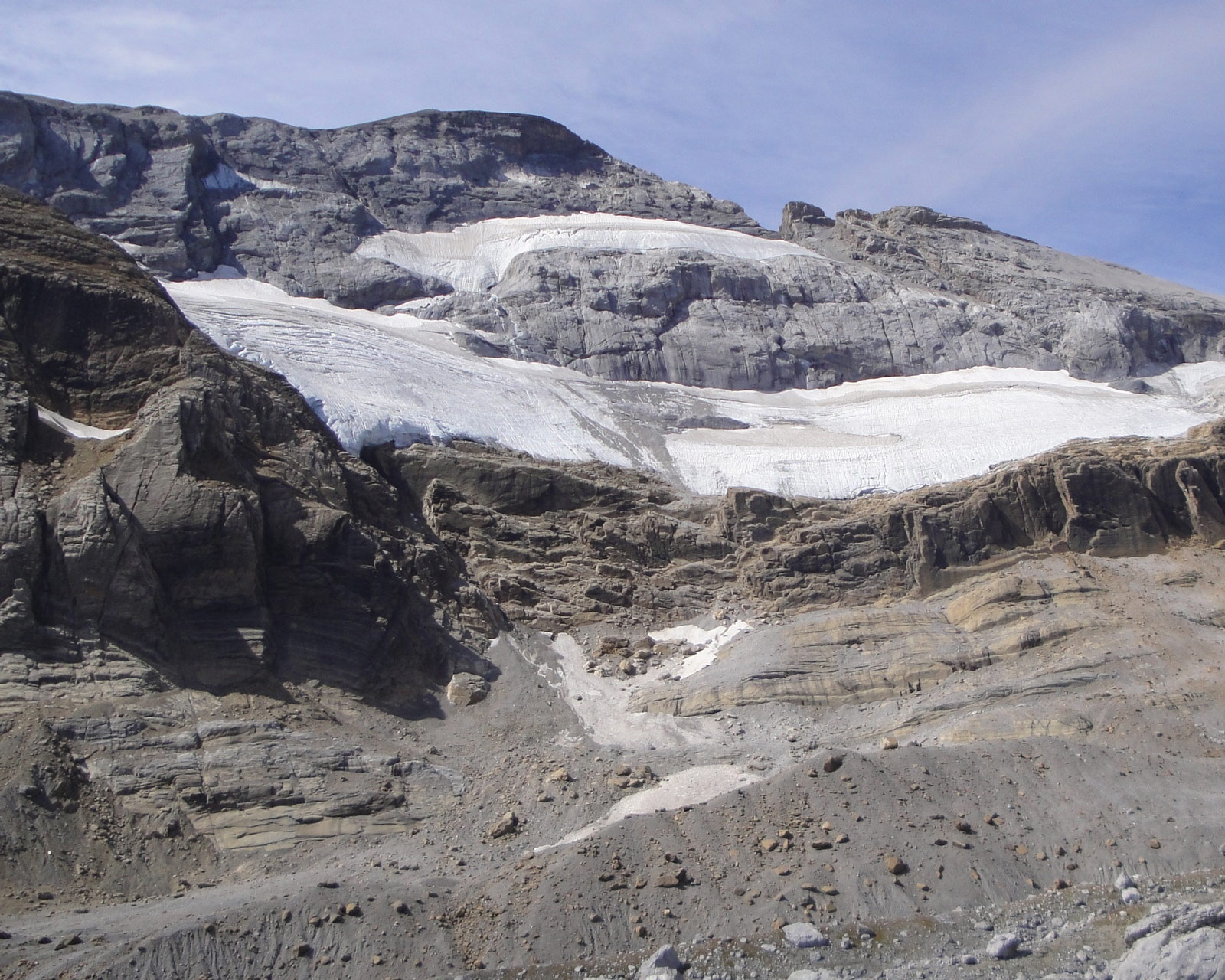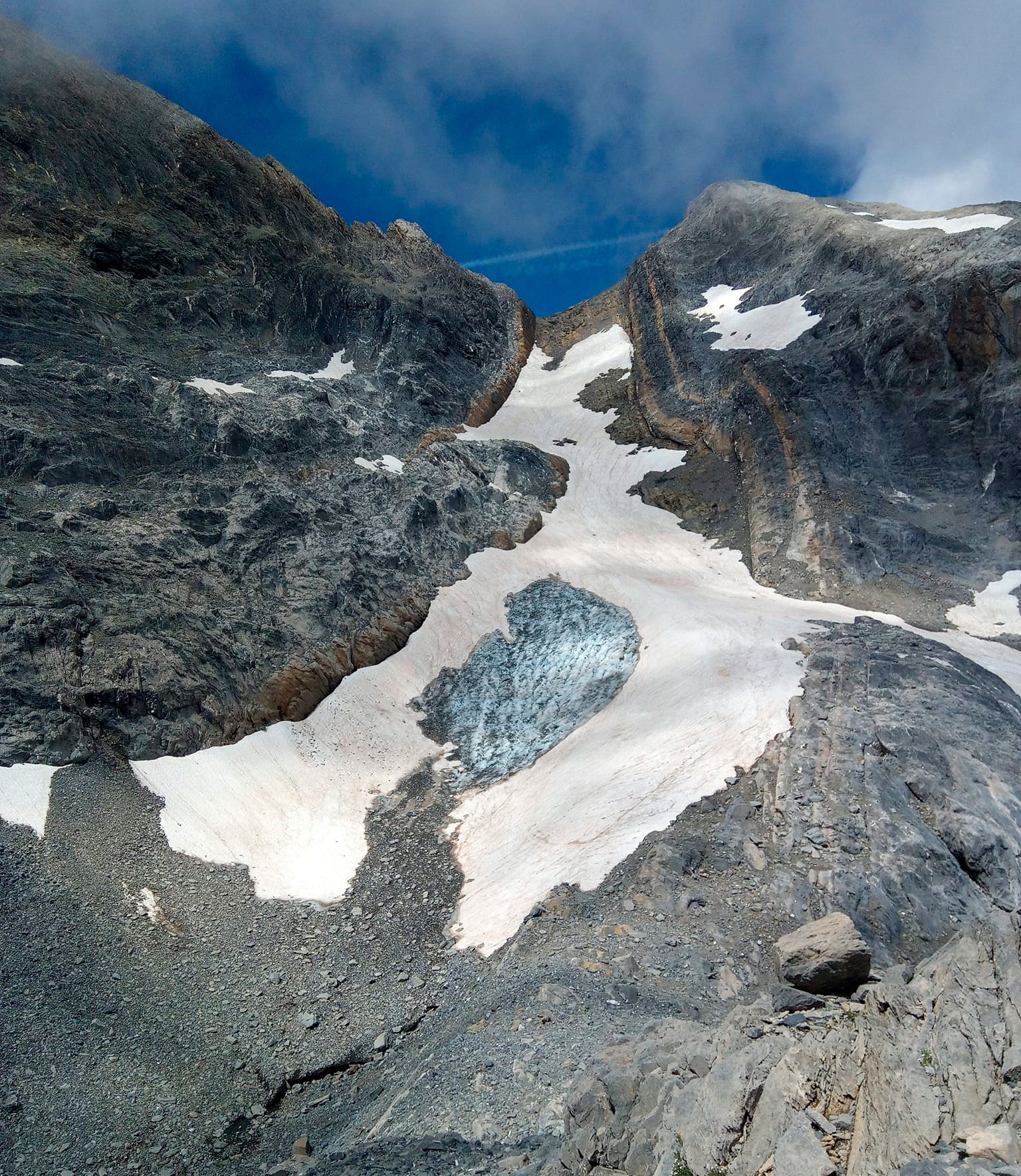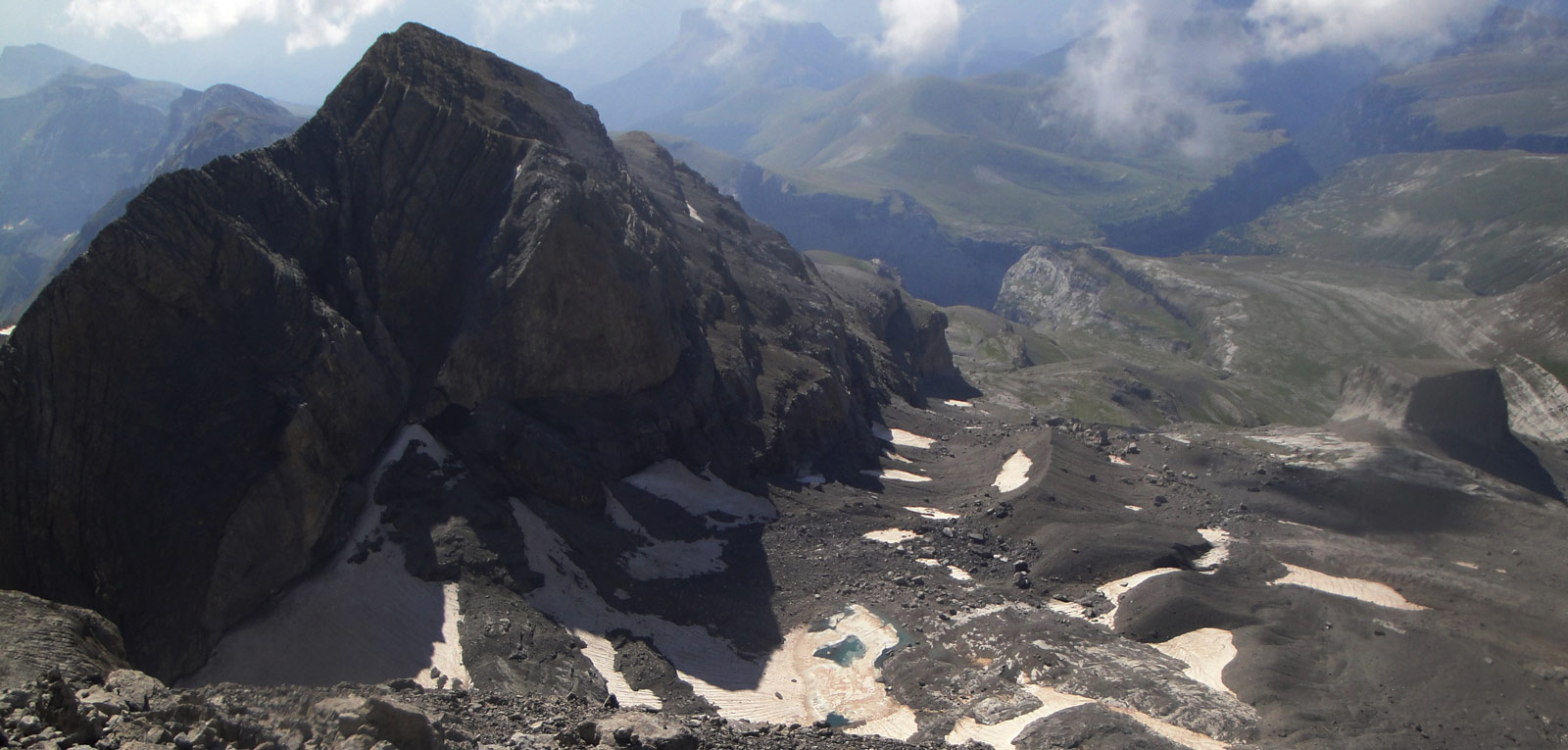On the northern slope of Monte Perdido, occupying several stepped terraces, the largest glacier in the Pyrenees developed during the Little Ice Age. Known as the Monte Perdido Glacier, it formed a single unit with the current glaciers 58) Superior and 59) Inferior of Monte Perdido, and the East Glacier of Marboré or Cilindro, composed of the current 62) Eastern Marboré, 63) Central Marboré and 64) Western Marboré.
Its 267 hectares made it the largest in the Pyrenees, ahead of the Aneto Glacier and representing more than 11% of the total ice cover in the Pyrenees. Due to the morphology of the massif, its maximum length of just over one kilometre was not particularly noteworthy (the 16th longest in the mountain range), but it formed the largest of the headwaters at 3.3 km.
In the lower tier, now free of ice, the horizontal split that led to the separation of the Monte Perdido Glacier and the East Marboré or Cilindro Glacier occurred at the beginning of the 20th century (probably in 1901).
The largest of its tongues extended across the lower terrace and, despite receiving an abundant supply of ice from the glacier’s feed zone, it gradually weakened and receded until it finally separated in the early 1970s. From then on, the Monte Perdido Glacier was considered to be separated from its tongue, strictly adopting the morphology of a hanging glacier. A decade later, a glacier continued to occupy this lower terrace, fed by ice from serac calving. In the 1990s, as is the case today, calving continued from the former middle step, occupied by the current 59) Lower Glacier of Monte Perdido. However, there is evidence to suggest that ice preceding these detachments has been disintegrating due to the impact of the fall and subsequent melting.
What we now know as 58) Upper Helero de Monte Perdido remained permanently attached to the Lower Helero by a narrow icefall until around 1930, when the connecting link broke for the first time. From that moment on, and for almost half a century, there were several episodes of union and separation, depending on the dynamics of the then Superior Glacier. From 1985 onwards, the final split took place, despite the fact that ice contributions from the Superior Glacier continued until the beginning of the 21st century.
The magnitude of the loss of ice thickness of both glaciers is considerable, exceeding 3 m/year. As a result, since 2023, the Superior de Monte Perdido has been declassified as a glacier, becoming a helleura. Its current area of 3.5 ha makes it the largest helleura in the Pyrenees.
On the Lower Glacier, a rocky strip that was already visible in 2000 began to emerge and become evident in its central sector. This resurgence, which has grown at the same rate as the loss of ice thickness, was the origin of a major split in the glacier in 2023.
Currently, with 19.2 hectares, the Lower Glacier of Monte Perdido is the second largest glacier in the Pyrenees, behind the Aneto Glacier. It represents 15% of the ice in the mountain range and almost 25% of the glacial ice located in Aragonese territory.
Este aparato glaciar pertenece al siguiente macizo:
58) Superior de Monte Perdido y 59) Inferior de Monte Perdido
Comparativa de imágenes

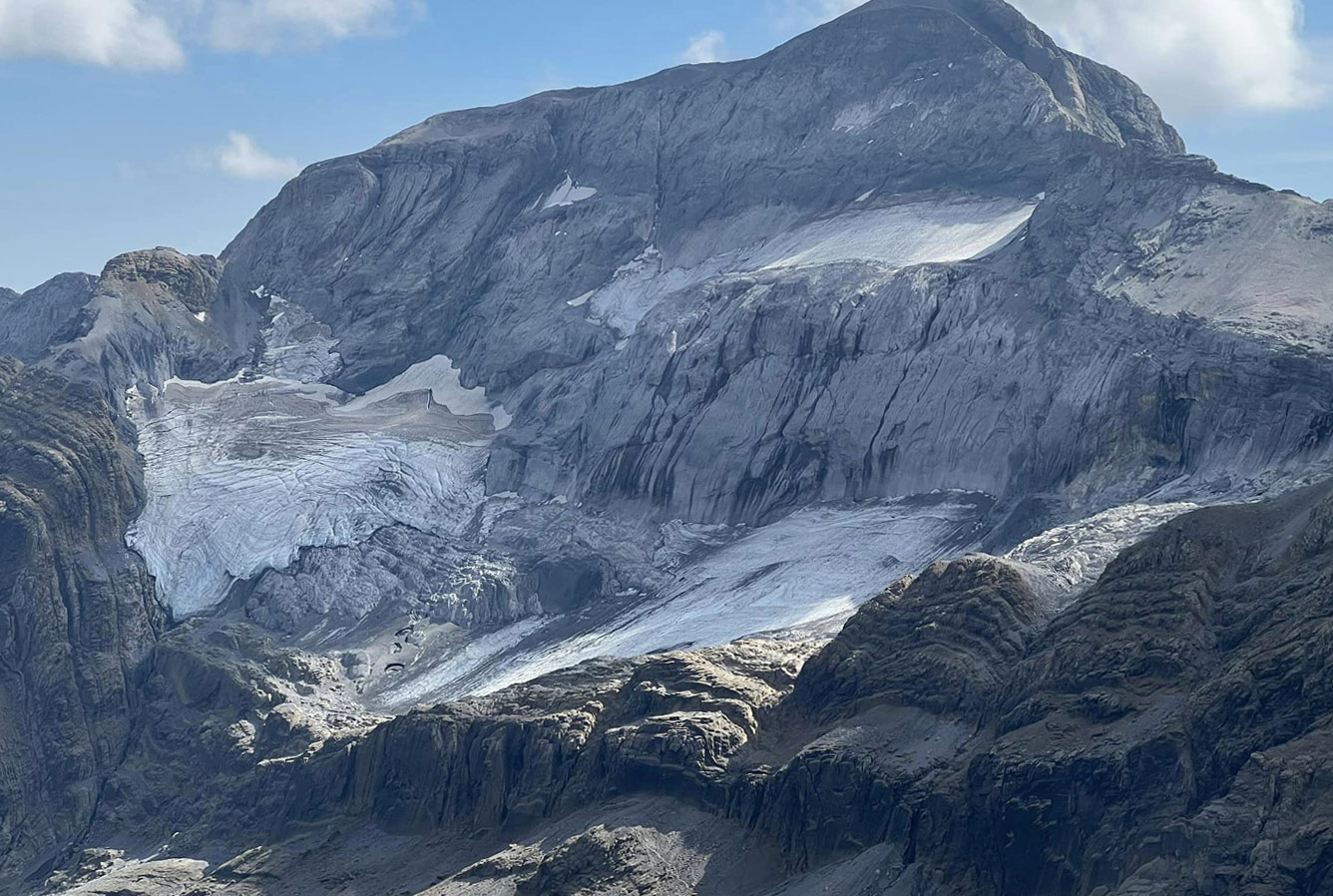
Comparison of 23 years.
In 2000, the Upper and Lower Glaciers of Monte Perdido. Compare with the following image. (Jordi Camins).
In 2023, 23 years after the previous image, the Lower Glacier of Monte Perdido has fragmented into two units, and the Upper Glacier has become a helleura. (David Strzalkowski).


Comparison of 109 years.
The Monte Perdido Glacier in 1910. On the lower step, on the right, the split with the East Marboré or Cilindro Glacier had already occurred. (Juli Soler Santaló – AFCEC).
In 2019, the weakening of both glaciers is accentuated. (Enric Casellas).


Comparison spanning 108 years. From the summit of the Cilindro de Marboré.
The Lower and Upper Glaciers of Monte Perdido in 1910. Note their magnificent rimayas. (Juli Soler Santaló – AFCEC).
Lower and Upper Glaciers of Monte Perdido in 2018. Three decades after the previous photograph, the weakening of the Upper Glacier and the loss of extension of the Lower Glacier are particularly noticeable. (Jordi Camins).

